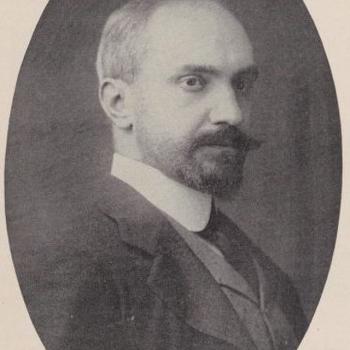The major brain regions that support emotional processing include the limbic system – particularly the hippocampus, amygdala, and hypothalamus – and the prefrontal cortex, anterior cingulate cortex (ACC), nucleus accumbens, and insula. Technical note: there are two hippocampi, one in each hemisphere of the brain; the same for the two amygdalae, ACCs, and insulae. Following common practice, we’ll mainly use the singular form.
By the way, as an interesting evolutionary detail, the limbic system seems to have evolved from the olfactory (scent) neural circuitry in the brain developed by our ancient mammal ancestors, living around 180 million years ago. They seem to have used their advanced sense of smell to hunt at night, while those cold-blooded reptiles were snoozing – and easier prey.
The conscious experience of emotion is just the top story – the penthouse floor – resting on many layers of neurological activity, both the firing of very complex and intertwining neural circuits and the tidal flows of neurotransmitters and hormones such as dopamine, serotonin, and oxytocin. Here’s a brief summary of each of these brain regions and its apparent role in emotion:
- Hippocampus – This vaguely sea-horse shaped region helps store the contexts, especially visual-spatial ones, for important experiences, such as the smell of a predator . . . or the look of an angry parent. This region is necessary for forming personal memories of events, and is unfortunately damaged over time by the cortisol released by chronic stress (especially, high or even traumatic levels of stress).
- Amygdala – Connected to the hippocampus by the neural equivalent of a four-lane superhighway, this small, almond-shaped region is particularly involved in the processing of information about threats. The subjective awareness of threat comesfrom the feeling tone of experience when it is unpleasant (distinct from pleasant or neutral). When it perceives a threat – whet her an external stimulus like a car running a red light or an internal one, such as suddenly recalling an impending deadline – the amygdala sends a jolt of alarm to the hypothalamus and other brain regions. It also triggers the ventral tegmentum, in the brain stem, to send dopamine to the nucleus accumbens (and other brain regions) in order to sensitize them all to the “red alert” information now streaming through the brain as a whole.
- Hypothalamus – This is a major switchboard of the brain, involved in the regulation of basic bodily drives such as thirst and hunger. When it gets a “Yikes!” signal from the amygdala, it tells the pituitary gland to tell the adrenals to start release epinephrine and other stress hormones, to get the body ready for immediate fight-or-flight action. But keep in mind that this activation occurs not just when a lionjumps out of the bushes, but chronically, in rush-hour traffic and multi-tasking, and in response to internal mental events such as pain or anger. (For more on the stress response – and what you can do about it – see the Wise Brain Bulletins, Volume 1, #5 and #6.)
- Prefrontal cortex (PFC) – If you whack your self on the forehead, the mini-shock waves reverberate through the PFC, which is “pre” because it is in front of the frontal cortex. The PFC is centrally involved in anticipating things, making plans, organizing action, monitoring results, changing plans, and settling conflicts between different goals: these are called the “executive functions,” and if the brain is one big village, the PFC is its mayor. Where emotion is concerned, the PFC helps foresee the emotional rewards (or penalties) of different courses of action. The PFC also inhibits emotional reactions; many more nerve fibers head down from the PFC to the limbic circuitry than in the other direction. The left PFC plays a special role in controlling negative affect and aggression: stroke victims whose left PFC is damaged tend to become more irritable, distraught, and hostile (the same happened for the unfortunate and famous Phineas Gage, the engineer who suffered an iron bar through his forehead in a mining explosion). On the other hand, differential activation of the left PFC is associatedwith positive emotions – and years of meditation practice!
- Anterior cingulate cortex (ACC) – This sits in the middle of the brain, centrally located for communication with the PFC and the limbic system. It monitors conflicts between different objects of attention – Should I notice the bananas in this tree or that snake slithering toward me? Should I listen to my partner or focus on this TV show? – and flags those for resolution by the frontal lobes. Therefore, it lights up when we attend to emotionally relevant stimuli, or sustain our attention to important feelings – inside ourselves and other people – in the face of competing stimuli (e.g., trying to get a sense for what’s really bugging a family member underneath a rambling story and other verbiage).
- Nucleus accumbens – In conditions of emotional arousal – especially fear-related – the accumbens receives a major wake-up call of dopamine from the tegmentum, which sensitizes it to information coming from the amygdala and other regions. Consequently, the accumbens sends more intense signals to the pallidum, a relay station for the motor systems, which results in heightened behavioral activity. This system works for both negative and positive feelings. For example, the accumbens lights up when a person with an addiction sees the object of his or her craving.
- Insula – Deeply involved in interoception – the sensing of the internal state of the body (e.g., gut feelings, internal sensations of breathing, nausea) – the insula lets you know about the deeper layers of your emotional life. And it is key to sensing theprimary emotions in others, suchas fear of pain, or disgust.
The post Emotion in the Brain appeared first on Dr. Rick Hanson.















